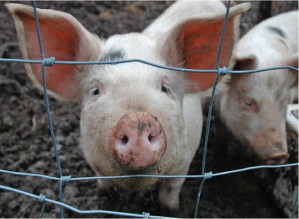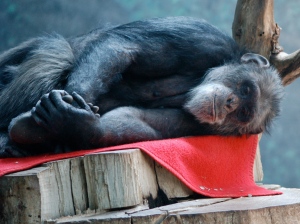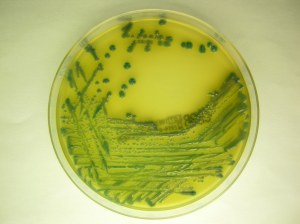I recently wrote a short eBook, which is now available on Amazon! It was a fun project and primarily a way to collect lots of advice I’ve received over the years. I’m including a short excerpt here—for the full book, please follow the link to Amazon! The book includes sections on a wide range of topics, including how to pick the right lab, how to manage your time, and how to be a good scientist.

Chapter 3: How to manage your time
Many people—including me—struggle with time management in graduate school. This can be for many reasons. For some, graduate school is their first experience with a serious, full-time job. For others, the incredible flexibility of academia takes time to get used to. Depending on your lab, it’s possible that you won’t have a direct manager or won’t report to anyone directly. If you miss a day of work (or show up at noon), it may be that no one will even notice. This freedom can be both liberating and demotivating.
Many programs, including my own, do not have specific milestones between years two and five. After passing qualifying exams in year two, the ensuing years can feel unchanging, even when you are making good progress toward graduation. To me, the lack of month-to-month milestones made time management seem like a daunting task.
However, the good news is that there are techniques to improve your time management skills! I’ve presented a few of my favorite suggestions here.
Track your progress
Graduate school lacks monthly or weekly milestones, so many successful graduate students find ways to make their own milestones. One great way to do this is through biweekly or monthly reports. Ideally, these reports are sent to your PI or mentor to help keep you accountable for writing them even when you are busy, but reports can be written for yourself as well. In each report, I reflect on the big picture objective of each project, where the project stood the last time I wrote a report, and what progress I’ve made in the last two to four weeks. Failed experiments also go in the report: learning that something didn’t work is an important part of progress in graduate school and is worth revisiting. Each report shouldn’t take more than a few hours to write, especially if all of your i’s and t’s are already dotted—for example, if your data are already worked up into presentable figures. I like this strategy because it allows me to track my progress month-by-month, and it gets me into the habit of working up data as soon as it’s generated.
Writing biweekly reports also helps me figure out what experiments I am avoiding: I notice when experiments have been in my “future directions” section for the past few months. Maybe those experiments are actually not as relevant as I though, or maybe (more likely) they use new techniques that will require extra time to learn. Either way, it’s worth knowing what I am unintentionally avoiding. On tough days, I look back at old reports to remind myself how much I’ve learned, even if it feels like I’m not progressing as fast as I should.
There’s a lot to be learned from pursuing whatever science is most interesting to you or following a line of inquiry out of sheer curiosity. But science is also measured in publications, and you eventually want to be guided by experiments that are leading towards a tangible product, particularly if you are interested in having a job in academia. An easy way to keep future manuscripts in mind is to sketch out figures for how you would present each project as a story. And when I say sketch, I mean sketch! I usually sit down with a blank 8×11 sheet of printer paper and draw boxes with sketched out data, showing what I think each figure will look like. If I’m not close enough to a manuscript to know what the graphs will look like, I will use words to describe the content (i.e. Figure 4—Phylogeny?). This can be done even if you’re in the very early stages of a project. This exercise essentially forces you to ask yourself how you would frame your project as a story to the scientific community. From there, your research can be focused towards answering the questions that bring the story to life.
I should note: not every scientist agrees with this approach. Some feel that creativity is stagnated if a scientist always keeps a manuscript format in mind. However, in my experience, sketching out papers is a way to keep focused on experiments that are related and building toward a PhD. That said, spending time on experiments that are tangents or side projects can be a great benefit—so maintain a healthy balance!
Set goals
I found myself in a rut in the middle of my fourth year. I would arrive at work, then make a list of everything I needed to accomplish that day. This strategy of day-by-day scheduling ended up feeling overwhelming to me—there’s only so much you can do in one day, and I felt frustrated by my slow progress. I discussed my frustration with a friend, and he suggested that I make my to-do list week-by-week instead of day-by-day. This allows for longer term planning, accommodates busy days, and identifies days with large chunks of time for longer experiments. More importantly, weekly to-do lists helped me feel less overwhelmed by any single day’s tasks.
While this strategy worked for me, there are many ways to set goals for yourself during graduate school. While my experiments lent itself better to weekly goals, some people may benefit from shorter- or longer-term planning, such as daily or monthly goals. Pick a strategy and try it out! Even after you decide on a plan, make sure you are reevaluating how it works for you and are open to trying new methods. Finding a way to motivate yourself via goal setting can help make the mountainous goals found in a PhD program—such as publishing or graduating—feel more attainable.
Track your time
At times, graduate students boast about how many hours per week they work. In a strange way, students can feel almost prideful about working long and hard hours. I am guilty of this as well.
One of the most interesting ideas on how to better manage my time was suggested at a conference in my second year. A female physics professor, much to my surprise, said that most people who say they work long hours are either lying or exaggerating. These people work inefficiently, she told me, and that inefficiency has actually been quantified in a research studies. She recommended that I read I Know How She Does It, by Laura Vanderkam.
Vanderkam studies the lives and habits of successful women across many fields using hour-by-hour weekly schedules. These meticulously documented scheduled revealed a gap between the number of hours some claims to work, and the number of hours that person actually works. For example, people who claim to work 90 hours per week are actually working closer to 50 or 60 hours when they annotate their weekly schedule. More likely, these people are either inefficient with their time—taking long lunch breaks, spending hours on the internet or taking coffee breaks—or they are simply overestimating their work week.
Since this conversation, I’ve become far more aware of my own scheduling inefficiencies. When I work late, it’s usually because I struggled to begin an experiment when I should, or I had many non-research meetings during the day. Of course, this is not universally true, and in some unusual circumstances, graduate students are expected to work many hours per week. But this tends to be the exception rather than the rule.
The most productive people I know in graduate school figured out early how to manage their time well, then spent the next several years working 40 hours or less while making fast progress. When I have documented my time, I’ve found that I spend a lot of time stressing about upcoming meetings, answering non-urgent emails, or reading the news. These inefficiencies lead me to 9 pm days far more often than does actual scientific need. In the past few years, the advice to document my time at least once per year has arisen several times, and it’s one of the more surprising and enlightening exercises I’ve done to improve my time management skills.
Finally, there are an incredible number of distractions in graduate school that are not necessary for you to graduate. These distractions can include mentorship, teaching, classes, extracurricular activities, coffee breaks, lunch with coworkers, and the internet. Some of these activities are important for developing your CV, avoiding burnout, networking with colleagues, and learning non-lab skills; however, I’ve found that these activities can also drastically lengthen my day. Tracking my time helped me document the frequency with which extracurricular commitments remove me from lab. With that knowledge, I was able to decide whether the time away from lab was time well spent.
Download the whole eBook for less than $2 at Amazon.com!




 Given their unique intelligence and similarities to humans, it is unsurprising that the National Institute of Health decided to
Given their unique intelligence and similarities to humans, it is unsurprising that the National Institute of Health decided to 